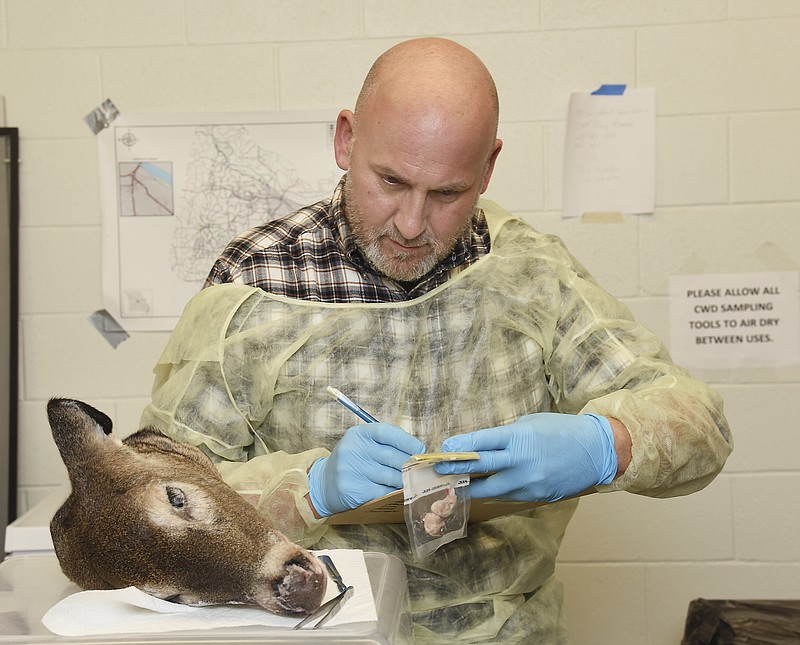With deer hunting season in full swing, officials with the Missouri Department of Conservation (MDC) say there have been no new cases of Chronic Wasting Disease (CWD) reported in the state.
MDC officials have been testing deer as the various seasons continue, but results can take several weeks to complete. As of Friday, MDC officials had collected 1,689 samples to test for CWD - 211 detected no CWD, and results are pending for the remaining 1,478, said Joe Jerek, MDC news services coordinator.
The department's focus on Mid-Missouri comes after a buck harvested in Cole County last year tested positive for the disease. The disease also was found in several dozen deer from Linn, Macon and Adair counties.
MDC considers 15 counties around Cole, Adair, Linn and Macon to be at high risk for the spread of the disease.
Hunters can get their deer tested 8 a.m.-5 p.m. today at the department headquarters on West Truman Boulevard, as well as during regular business hours through the week until Jan. 15, when the archery season ends.
Those bringing in deer for testing need to bring the head of the deer along with 4-6 inches of the neck so Conservation officials can obtain the lymph nodes which are needed to do the test.
MDC strongly encourages hunters to not move deer carcasses out of the area where harvested, not feed deer, have harvested deer tested for CWD, and report sick deer to local MDC staff.
The disease can be spread to new areas and infect additional deer through infected carcass parts or soil contaminated by infected carcass parts. MDC recommends removing meat in the field and leaving the carcass behind. If hunters must move a carcass before processing, place the remaining carcass parts after processing in trash bags and properly dispose of them through a trash service or landfill.
CWD is also transmitted from deer to deer and can spread more easily when deer gather in unnaturally-concentrated numbers, such as at feeding sites or mineral blocks.
CWD infects only deer and other members of the deer family by causing degeneration of brain tissue, which slowly leads to death. The disease has no vaccine or cure and is 100 percent fatal.
"There is no way to fully eradicate chronic wasting disease from an area once it has become well established," said Kelly Straka, MDC state wildlife veterinarian. "While we do not expect short-term population impacts from the disease, CWD is likely to have serious long-term consequences to the health of Missouri's deer herd. Therefore, we have and will continue to focus on slowing the spread of the disease among deer in the affected areas, and trying to limit the spread to new areas of the state."

